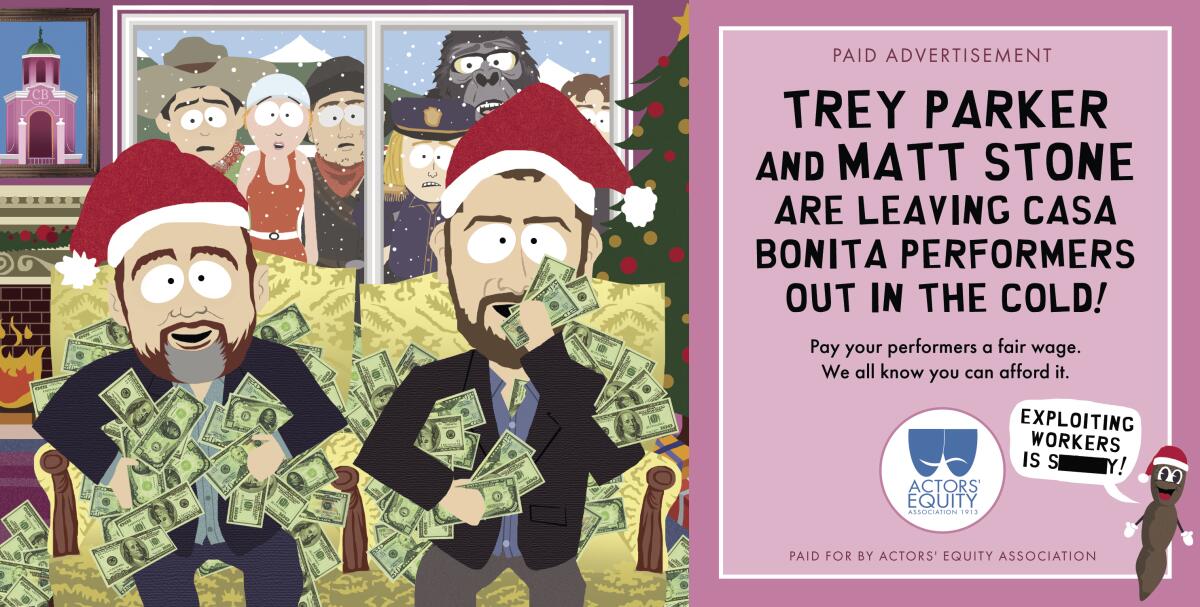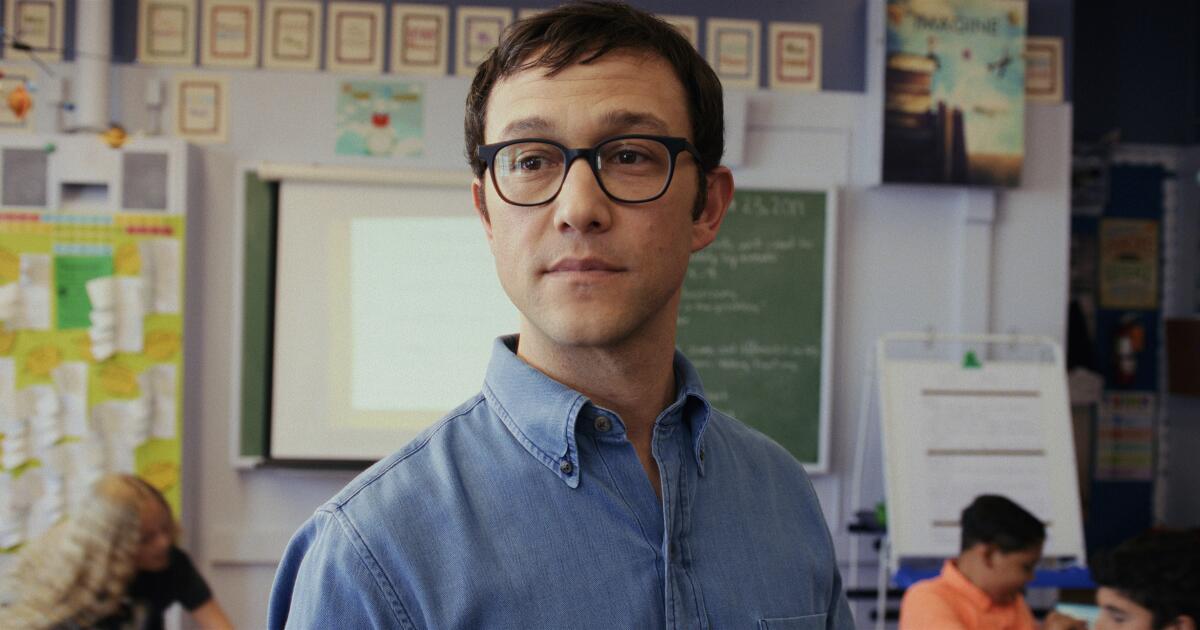‘South Park’ creators clash with performers at their Casa Bonita restaurant
“South Park” creators Matt Stone and Trey Parker, who this summer landed one of the richest TV deals ever, are being called Scrooges by performers at their Casa Bonita restaurant near Denver.
In late October, the performers, including the famed cliff divers, went on a three-day strike, citing unsafe working conditions and stalled negotiations over their first contract. The performers voted unanimously to unionize with Actors’ Equity Assn. a year ago.
The strike ended when the restaurant’s management agreed to bring in a mediator to assist in the negotiations.
But the standoff has continued, prompting Actors’ Equity to take out an ad in the Denver Post this week that depicts a “South Park” cartoon-like Parker and Stone awash in hundred-dollar bills while their staff, including a gorilla and a person clad in a swimsuit, shivers outside in the Colorado cold.
The union said its goal is to prod the star producers to resolve the labor tensions by giving about 60 Casa Bonita performers, including magicians and puppeteers, a pay increase and other benefits along with their first contract.

A full page ad is running in the Denver Post on Dec 24.
(Actors’ Equity Association)
Other Casa Bonita workers voted earlier this month to join the International Alliance of Theatrical Stage Employees Local 7.
“At Casa Bonita, we value all of our team members and their well being,” the restaurant management said in a statement. “We are negotiating in good faith with our unionized team members in the hopes of concluding fair collective bargaining agreements.”
Parker and Stone declined to comment through a spokesperson.
The pair, who also created the hit Broadway play “The Book of Mormon,” rescued the kitschy, bright-pink Mexican-themed eatery in Lakewood, Colo., from bankruptcy in 2021 and have since plowed more than $40 million into the restaurant to upgrade and correct unsafe electrical, plumbing and structural issues after the facility had fallen into disrepair.
For “South Park” super-fans, the venue has become something of a mecca since first being featured in the seventh season of the long-running Comedy Central cartoon.
In that episode, Cartman flips out when Kyle invites Stan, Kenny and Butters Stotch to his birthday party at Casa Bonita (not Cartman), where they are serenaded by the restaurant’s ubiquitous mariachi bands.
Along with legions of other kids who grew up in Colorado, Parker and Stone fondly remember making the trek to the Casa Bonita of their 1980s youth. Restoring the restaurant has become a passion project for the writers, a journey that became grist for a documentary, “¡Casa Bonita Mi Amor!,” which streams on Paramount+.
In July, Paramount managers were eager to tie up loose ends to facilitate the company’s sale to David Ellison’s Skydance Media and RedBird Capital Partners. The incoming management team also became involved in the protracted negotiations to strike a new deal with Parker and Stone’s production company, Park County, to avoid having the situation unravel, possibly tripping up their corporate takeover.
Paramount ultimately agreed to extend the overall deal for Park County as well as lock up the show’s exclusive global streaming rights for $300 million a year over five years. Until this year, the show streamed exclusively on HBO Max.
The overall deal is slated to bring Parker and Stone’s firm $1.25 billion through 2030.
As part of the pact, the team agreed to create 50 new “South Park” episodes for Paramount. The series has enjoyed a ratings bounce and increased cultural resonance this year as it routinely roasts President Trump.
Actors’ Equity, which also represents Broadway performers, is seeking pay raises for its members at Casa Bonita. Union representatives said performers’ wages there average $21 to $26 an hour.
“Matt and Trey have become fabulously wealthy by pointing out the hypocrisy of rich and powerful people,” said David Levy, communications director for Actors’ Equity. “And now they are behaving exactly like the people they like to take down.”


